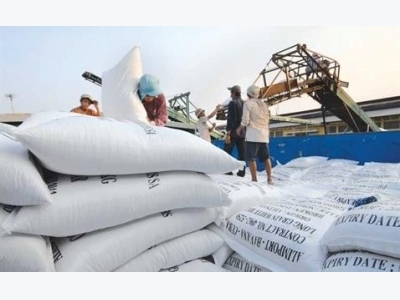Wheres Vietnam in the global value chain?

Ten years ago, the risk for Vietnam was that it might miss the glbal ‘integration train’. Today, the question is where is Vietnam in that train?
On May 25, Vibiz, a website of Yoilo Global, released the results of its survey, saying that 64 percent of rice available in the market is Vietnam’s but is labeled with foreign brands.
The survey also found that 53 percent of consumers like foreign rice sourced from Thailand, Cambodia and Japan, despite the fact that Vietnam is a big rice grower and that there are 67 rice varieties, but only 21 are given Vietnamese names.
Vietnam’s rice doesn’t bear its true name in foreign markets: importers buy Vietnam’s rice and then label the rice with their brands to sell at supermarkets in their markets, or export to third countries.
The ‘rice sorrow’ can be explained by the theory about the production value chain. Farmers determine which rice varieties to grow, while they cultivate and harvest rice in traditional ways.
The ‘rice sorrow’ can be explained by the theory about the production value chain. Farmers determine which rice varieties to grow, while they cultivate and harvest rice in traditional ways.
Harvested rice is sold to merchants, who then sell to export companies. Since merchandise rice is mixed, the quality is not high and exporters have to lower selling prices to attract buyers.
This means that the phases of the rice production value are implemented separately which don’t have close links.
In other words, Vietnam still cannot build up a completed value chain for its rice, though rice is a key export item.
According to Dao The Anh from MARD, some Vietnamese companies now export rice which bear their own brands.
Co May and Nep Cai Hoa Vang, for example, have relatively high selling prices. The growers of the rice have to build up the material growing areas of their own and follow strict requirements in farming and harvesting.
Citing the story of Co May as a ‘bright spot’ in Vietnam’s rice industry, Anh said the company sent staff abroad to learn about market demand and then place orders with farmers.
“This is a good way for the long term,” Anh said, adding that farmers need support from the State, while businesses need a reasonable policy which allows them to exploit their advantages.
According to OECD, the added value of the foreign invested economic sector in the manufacturing sector accounts for 48.8 percent of Vietnam’s total export turnover, while the domestic added value content in export still accounts for 12.7 percent only.
A figure was mentioned during PM’s Nguyen Xuan Phuc’s visit to the US several days ago that Vietnam can pocket only $22 from every pair of shoes sold for $100.
Related news
 Streamlining credit flows for hi-tech agricultural development
Streamlining credit flows for hi-tech agricultural development Despite positive achievements, Vietnam’s agriculture, particularly hi-tech agricultural sector, is still facing difficulties in accessing loans for further
 Asia Coffee-Vietnam, Indonesia discounts widen but in slow trade
Asia Coffee-Vietnam, Indonesia discounts widen but in slow trade Discounts in Vietnam and Indonesia, Asia's top coffee exporters, widened as world coffee prices rose, but trading was thin in both markets
 Material supply matters to cashew industry of Vietnam
Material supply matters to cashew industry of Vietnam About 500,000 tonnes of material cashew nuts will be imported from now to October to serve processing and meet the targeted export volume of 360,000 tonnes